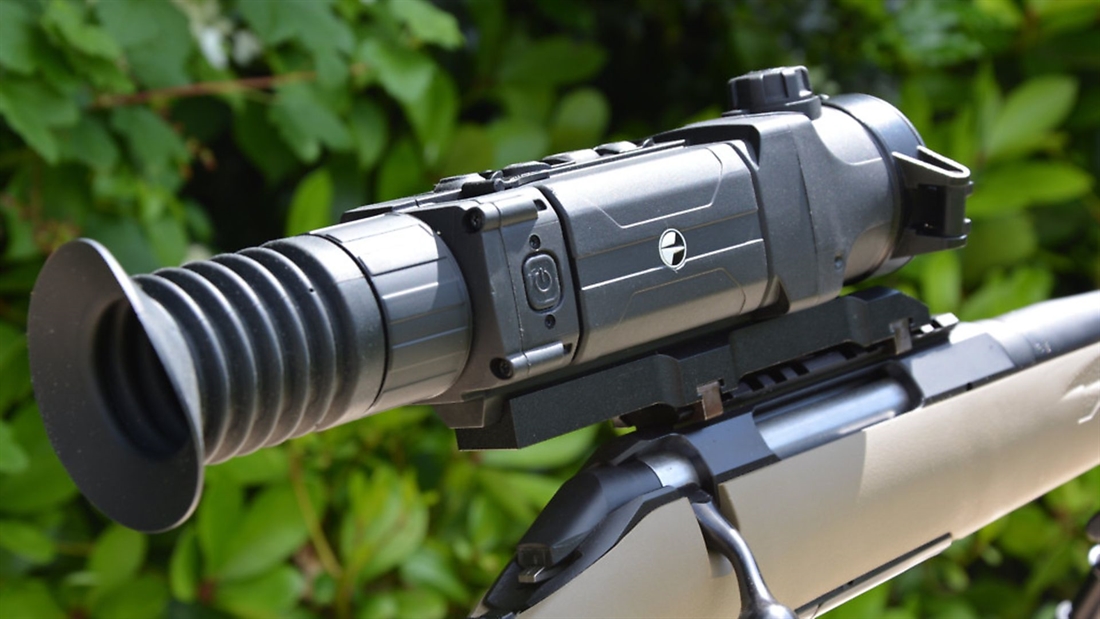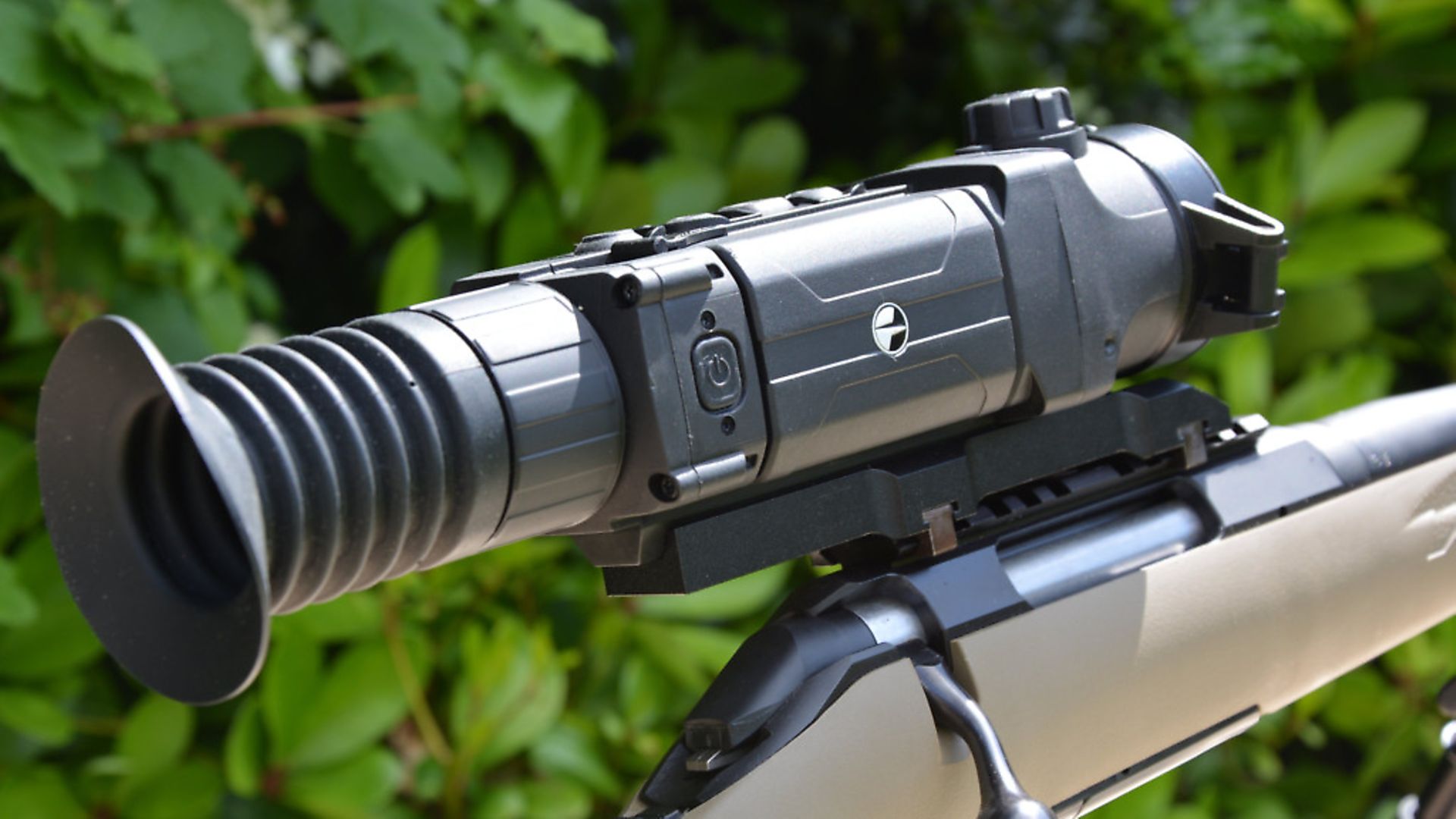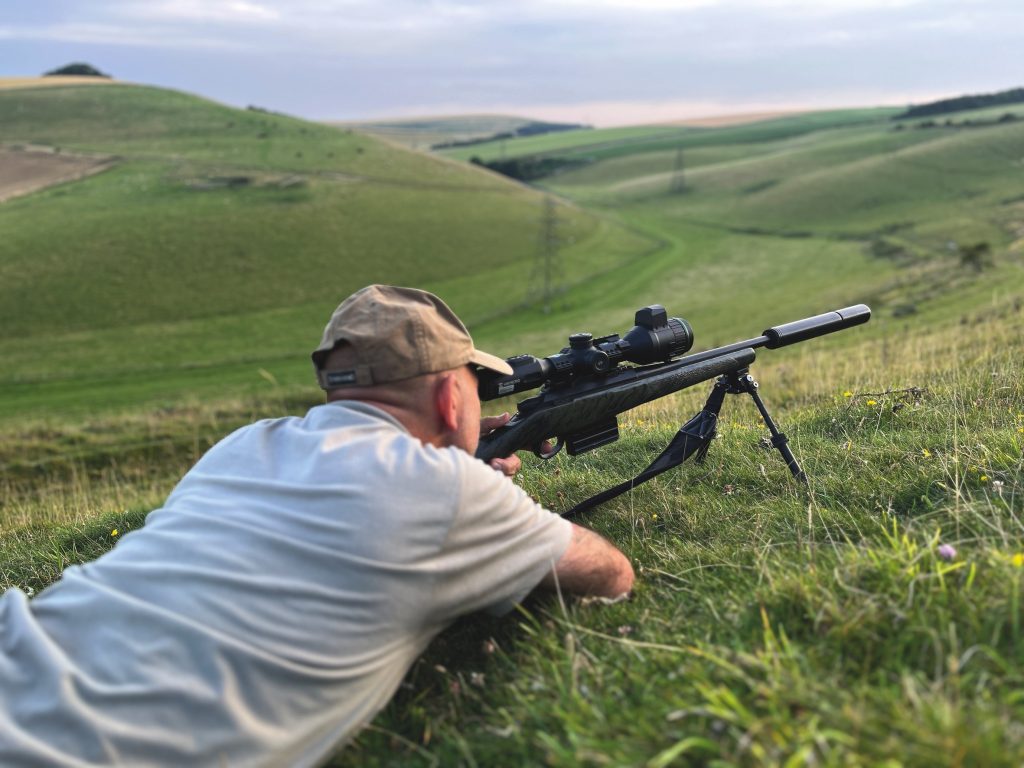Pulsar Trail XP38 Thermal Riflescope – TEST & REVIEW

Chris Parkin puts Pulsar’s Trail XP38 Thermal Riflescope to the test, and finds it an incredible tool for serious pest control users

TECH SPECS
50hz uncooled microbolometer
Sensor Resolution: 640×480
Pixel Pitch: 17µm
Detection range: Up to 1350m
Display: AMOLED 640×480
Integrated Wi-fi and video recording
Magnification: 1.2x to 9.6x magnification
Zeroing Profiles: 3 configurations each with 5 separate distances

Reticle options: 10
Picture in Picture mode
Windage and Elevation: 1 click mm/ 100m 45/45
Weight: 600g
Dimensions: 285x72x76 mm
FOV 16.3°
Anti-shock sensor protection system
Noiseless calibration
Includes standard weaver mount, QD112 is available as an optional extra.

FOR: These electronics are getting better and better, and ergonomics improve along with control; Compact dimension; Improved battery; Fantastic image quality; Tactile buttons improve the controls infinitely compared to the visually similar Helion spotter’s buttons
AGAINST: I think the ocular lens is far too critical, needing very precise alignment through the shot; I never got a definite answer on the click values so accurate “dialling” wasn’t an option
VERDICT: This is an amazing tool with superb thermal gradient providing a rich image for serious pest control. Please just always remember – thermal teases you so easily with what you want to see, but what you want to avoid still lingers in the background, often too literally!
RRP: £3769.95
CONTACT: www.scottcountry.co.uk 01556 503587

IN DEPTH REVIEW
The Pulsar Trail XP38 thermal riflescope is one of two top-end foxing and vermin control tools suited to the keen enthusiast or consummate professional. It uses an unchilled micro-bolometric sensor with resolution of 640×480 pixels and 17 µm thermal core to produce a highly detailed image, onto which the internal electronics superimpose any one of 10 aiming reticles.
A 6’ target is supposedly detectable from as far as 1,350m, dependant on atmospheric conditions, and the highly detailed image will detect heat variation throughout the body and extremities of animals to give a graduated colour palette, helping define 3D shape even more clearly.
This is good for identification because, being totally undetected yourself, watching the gait of an animal moving as well as the temperature differential, is extremely helpful in determining anything untoward at the last moment before the shot is taken.
The base level optical magnification of 1.2x can be boosted up to 9.6x with video and photographic recording incorporated. Wifi connectivity to live stream to your phone or tablet’s display screen is a handy tool if you are in a vehicle, but preferably not direct to social media!
Technology such as thermal is fast evolving, but this XP has been around for over a year now and has stood the test of time in a market where we have accepted the 50Hz refresh rate, once a massive innovation on its own, as the required norm for smooth movement. Let’s face it, when it comes to shooting, a lot can happen in a 50th of a second!

A detailed instruction manual is supplied for you to familiarise yourself with each control. The unit is operated by four main buttons on the upper surface that I liken to a clarinet, with the initial on/off switch to the right rear side.
A bellows eyecup conceals your eye to prevent light leakage, and the unit supplied had standard Weaver mounting claws – it is easy to set up on a rifle with a suitable rail. I consider this almost mandatory for reliable NV mounting, especially if you swap back and forth with any daylight optics on a regular basis.
The menu structure is logical, and the buttons are easier to control on here than on the similar-looking Helion handheld spotter, which does share a lot of the technology. These buttons are rubber covered and you can feel the delicate, tactile clicks far more easily for a generally lighter feel to the controls. Zoom can be modified between seamless 0.1x increments, and holding down the button will flip the unit to a screen-in-screen zoom mode. This is where a second internal segment on the upper display screen shows much closer detail of what the main ‘reticle’ is pointing at, and it’s superb for more precise shots on small quarry like rabbits at 200m plus.
The best thing is you never lose your field of view, and it is far easier to locate new targets or track any runners. Focusing the internal OLED screen to your eye is via a collar in front of the bellows. It only needs doing once, but it does have a pinpoint spot in the eyepiece lens that has true, sharp focus, even though you can see a wide field of view. This is a common complaint I have with night vision and thermal kit, which I believe tease us with electronic tricks yet are lazy with the old-school optics they feel are somewhat avoidable. Your eye has to remain in an extremely precise location to retain that sharp focus – if it were a regular riflescope I would say it has a minimal eye-box. Perhaps they think modern users will sit glued to their smartphone for a high-quality display screen, rather than addressing the rifle correctly in use!

A built-in accelerometer/gyroscope identifies rifle cant greater than 5°, with an arrow indicating the direction and degree of tilt. Auto shutdown when left in a non-shooting position saves your battery, and you can even have this operate when the gun is vertical or laid on its side, similar to the most up-to-date optical scopes with illuminated reticles.
The integrated Stadiametric rangefinder is scaled to tally with whatever zoom setting is applied, and the lateral bars spread apart or close together to bracket known quarry species against reference examples, for very approximate rangefinding.
I generally find these best left at a fixed setting and used as a quick visual reference, rather than being deliberately applied every time quarry is encountered… it’s a time-consuming tool. I will say, though, that the lighter, more tactile button press is better than that of the Helion handheld units with similar capabilities. You are reaching further to these controls on top of a rifle, and the last thing you want to have to do is operate them with a heavy hand. The remote control is handy but easily lost.
Thermal is great, but you still need to know your land well – the thermal scale gives a pretty detailed image, but will never show up twigs and branches disrupting a shot like night vision can. There are benefits either way – the thermal is king, to be fair, but I’m sure we are not far from fully-integrated units combining both IR camera and thermal sensor for the best of both worlds.

The Streamvision app allows users to update the device firmware with new functions, and a new multi-function remote control with encoder wheel puts more control quickly at your fingertips (but could be easily lost in the dark). The upside is that if you look for it while it’s still warm, the Trail itself will refind it!
A quick-detach, rechargeable IPS5 5.2Ah battery pack is now included, with the charger and cable doubling up as the connection via USB port to your PC for downloading video footage on the internal memory. It delivers over eight hours of power and I find these brilliant, both here and on other Pulsar products using them. They don’t fail in low temperatures and when the display screen says there is ¼ charge remaining, there is ¼ charge remaining, so they are very predictable.
Extra higher-powered IPS10 battery packs, as well as CR123A and AA battery cases, are also available and provide a perfect off-the-grid power solution.
Zeroing set-up of any of the 10 available reticle choices uses the excellent one-shot system that Pulsar has developed across the range and you will find all controls either extra to other Pulsar kit or similar in function, nothing is reverse engineered.
Zeroing with a hot handwarmer either attached directly onto your target or, better still, taped to the back of a bulletproof gong, is simple, and the elevation and windage adjustment available had no problem coping with the trajectory of .22 rimfire or the .223 I used the sight with. Image focus is handled over varying distances by the dial above the objective lens that shows a fold-back cap to protect it in transit.

You can save set-ups for three different rifles and five distances per set-up. The controls for this get easier to use with time and experience, but I still found it slow and quite easy to forget where you left it set up, so in general I used holdover on the reticles for faster multi-range use.
Let’s face it – a .22 centrefire zeroed with an appropriate point-blank range is quite easy to hold on or slightly high off centre on a fox. But I will add that if you are night-time rabbit bashing over greater distances, the multi-distance options may prove more useful if time and patience allow.
This is also where the reticle format and white versus black equalling hot visual display may show distinct preference for your eyes, but I still prefer white equalling hot as I find it more intuitive when there are more background items like rocks obstructing the landscape.
To be fair, on short grasslands, rabbits stand out well beyond 400m, but aiming for headshots beyond 200m is tricky purely down to reticle subtension on the small head.
Body shots are no problem at ranges like this, though. When you scale that against a fox, the game changes entirely – accurate shots are possible way beyond the ranges my permissions would invite, as interpretation of wind at night with a thermal is very difficult for me to compensate for, and I wouldn’t be taking shots. Yet spotting and shooting out to 300m in low wind conditions with assured non-interference for foliage in flight would not technically appear to be a problem on such quarry.
Thermal is becoming quite astounding and is a new capability that, once used on a spotter or riflescope, is hard to walk away from.
It is effective, but if I share one phrase you will remember, just bear in mind that thermal may well show you what you want to hit, but it doesn’t show the things you need to avoid.
This is now an electronics-driven market. New features and the latest gizmos continue to add to the concept of thermal imaging, but don’t expect any of them to totally overrule fieldcraft, knowing your land and your quarry. It is easy to point and shoot with thermal, but don’t forget you can’t call anything back and foxes missed with bullets nicking twigs or branches soon become nervous. They have no idea who is looking any more.



Related Articles
Get the latest news delivered direct to your door
Subscribe to Rifle Shooter
Elevate your shooting experience with a subscription to Rifle Shooter magazine, the UK’s premier publication for dedicated rifle enthusiasts.
Whether you’re a seasoned shot or new to the sport, Rifle Shooter delivers expert insights, in-depth gear reviews and invaluable techniques to enhance your skills. Each bi-monthly issue brings you the latest in deer stalking, foxing, long-range shooting, and international hunting adventures, all crafted by leading experts from Britain and around the world.
By subscribing, you’ll not only save on the retail price but also gain exclusive access to £2 million Public Liability Insurance, covering recreational and professional use of shotguns, rifles, and airguns.
Don’t miss out on the opportunity to join a community of passionate shooters and stay at the forefront of rifle technology and technique.




